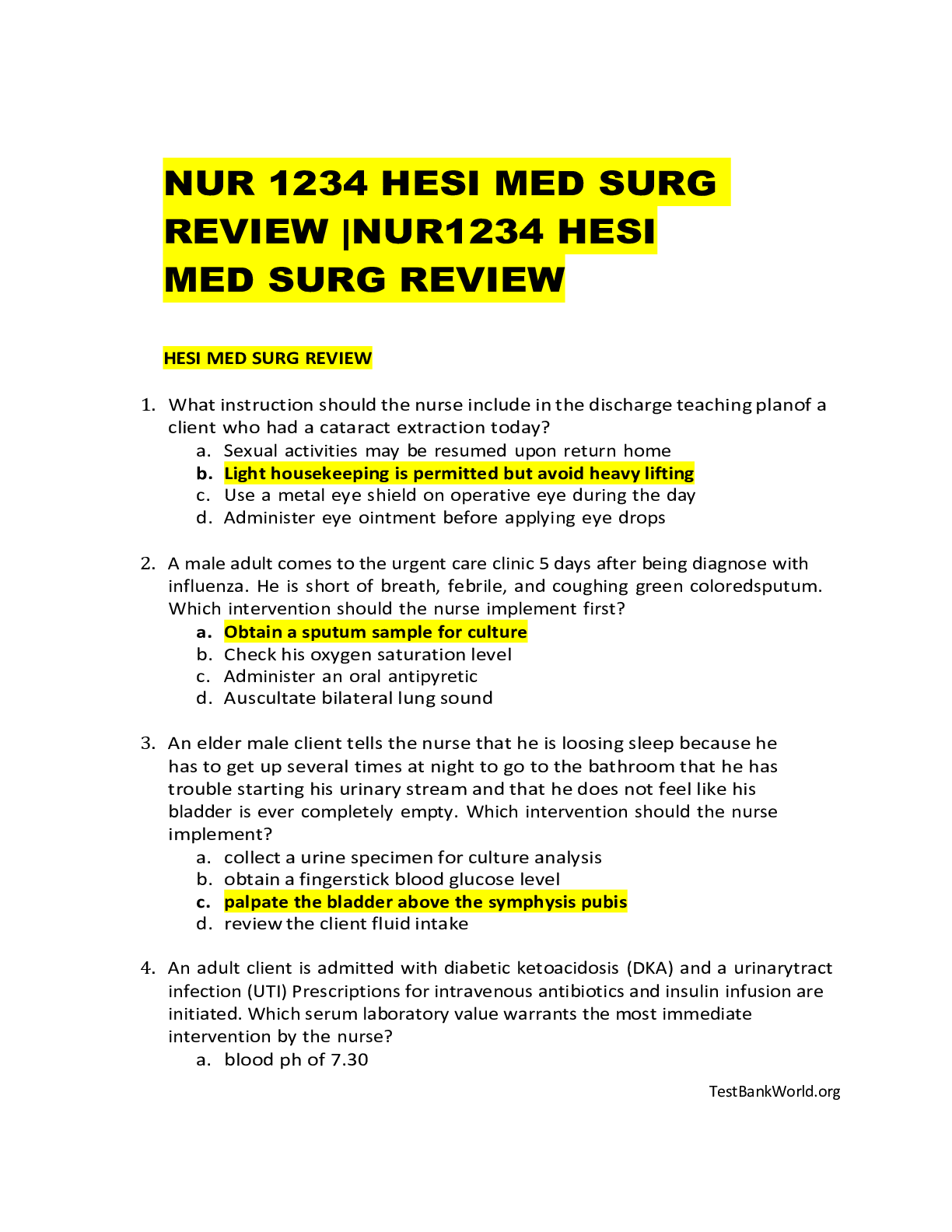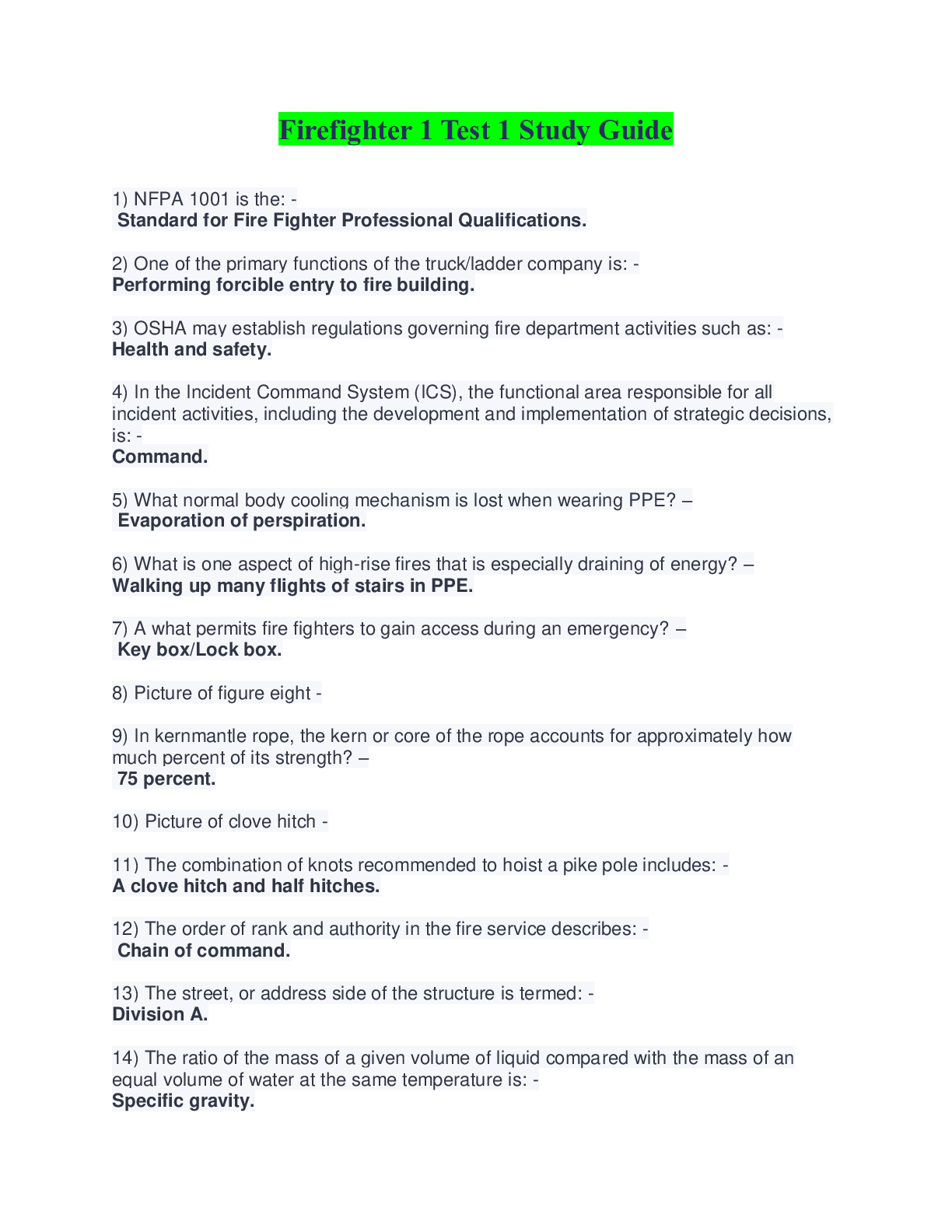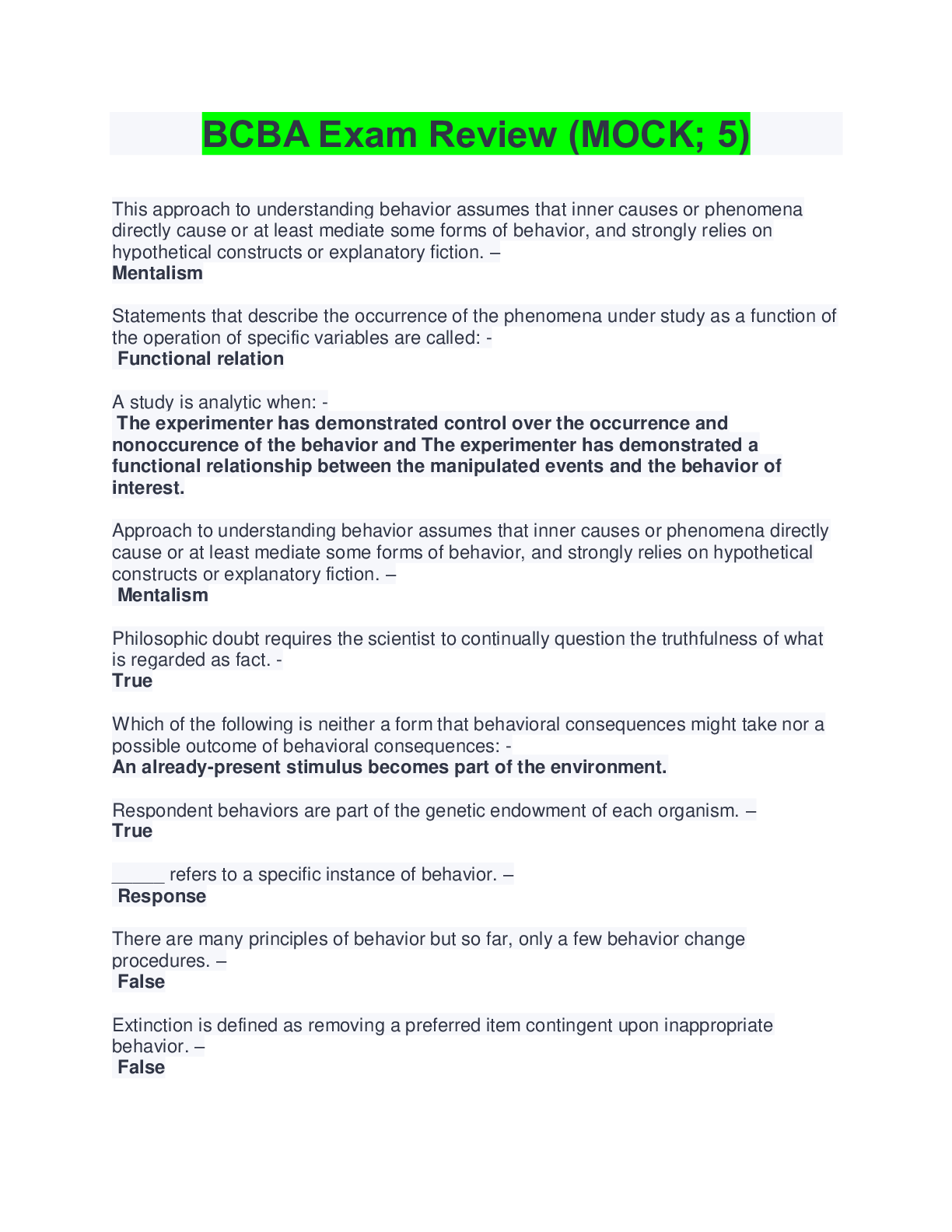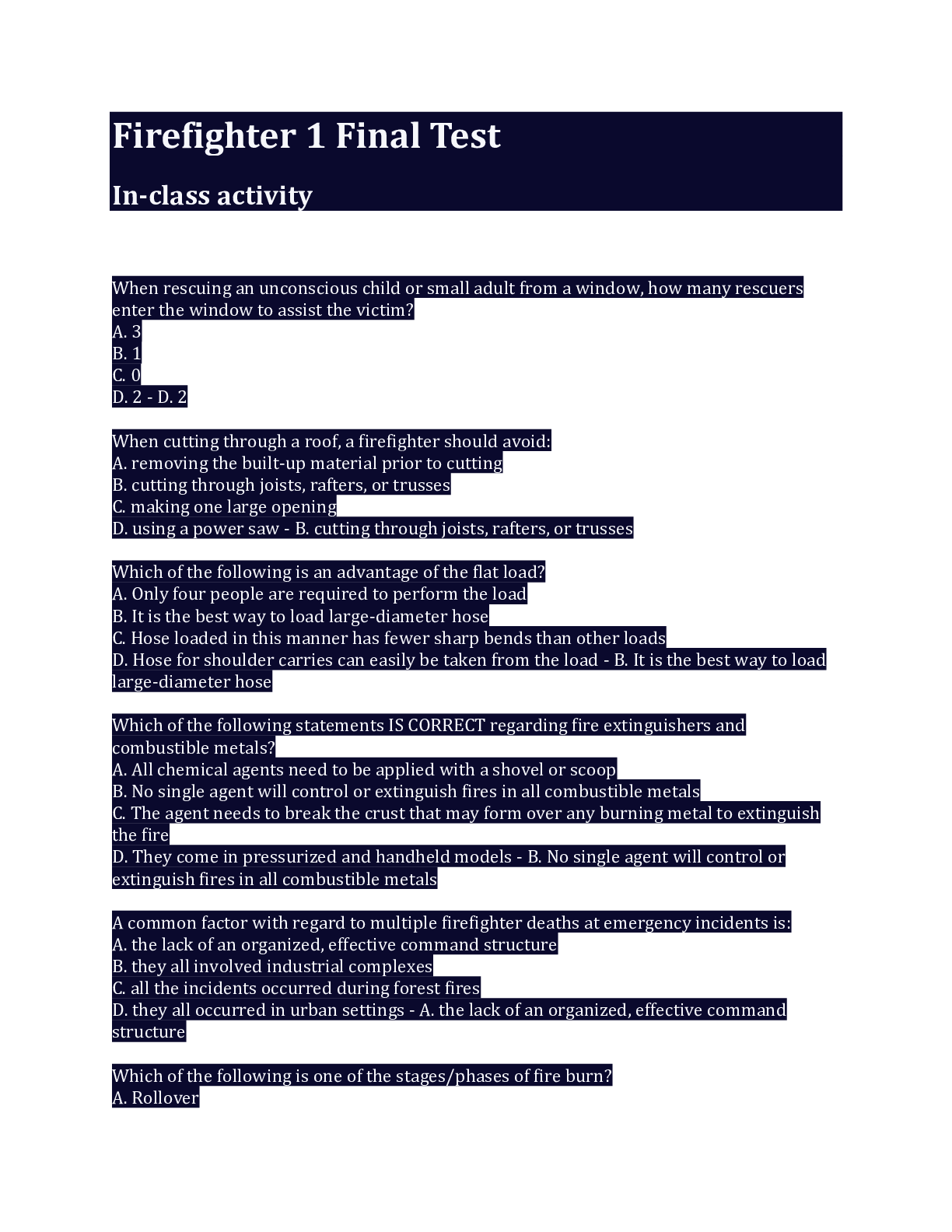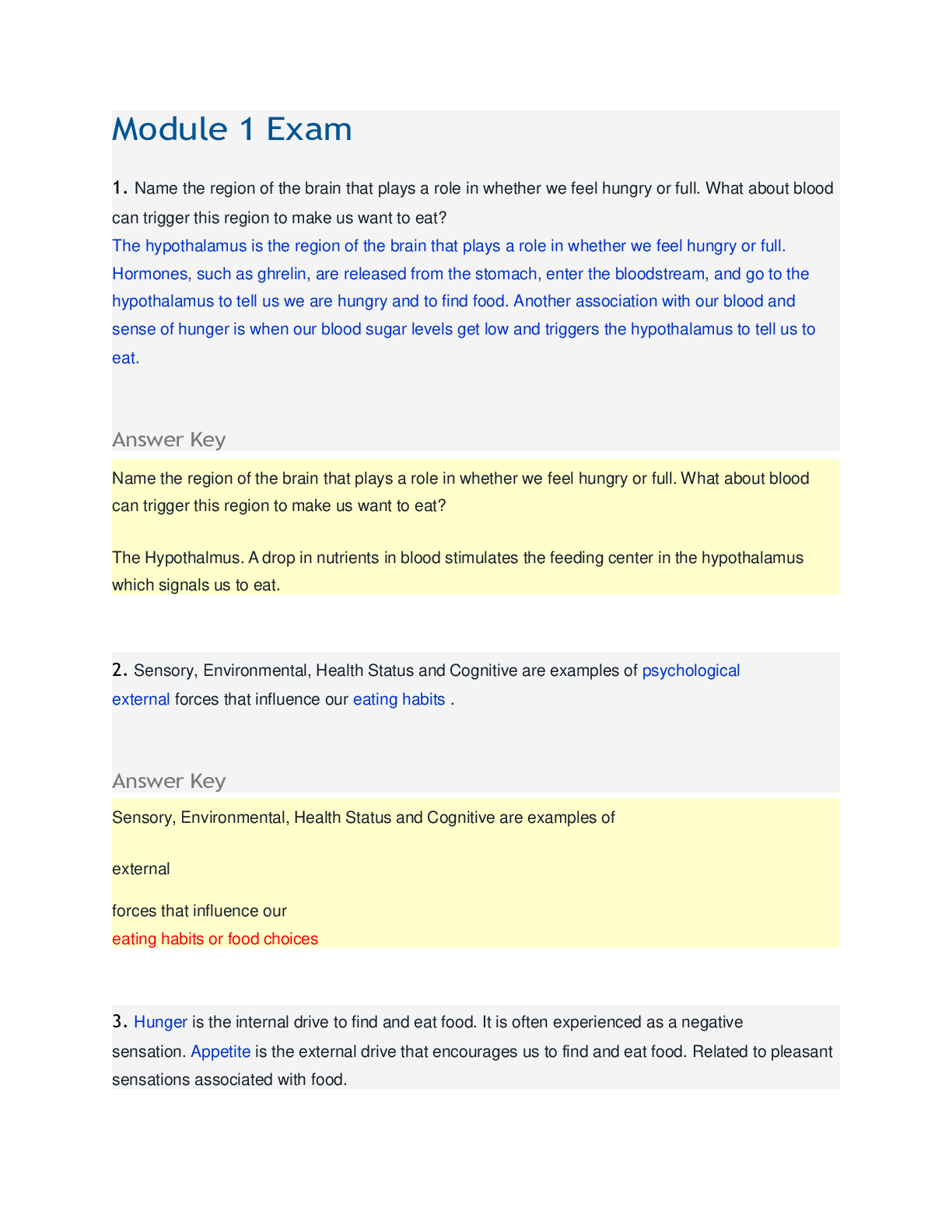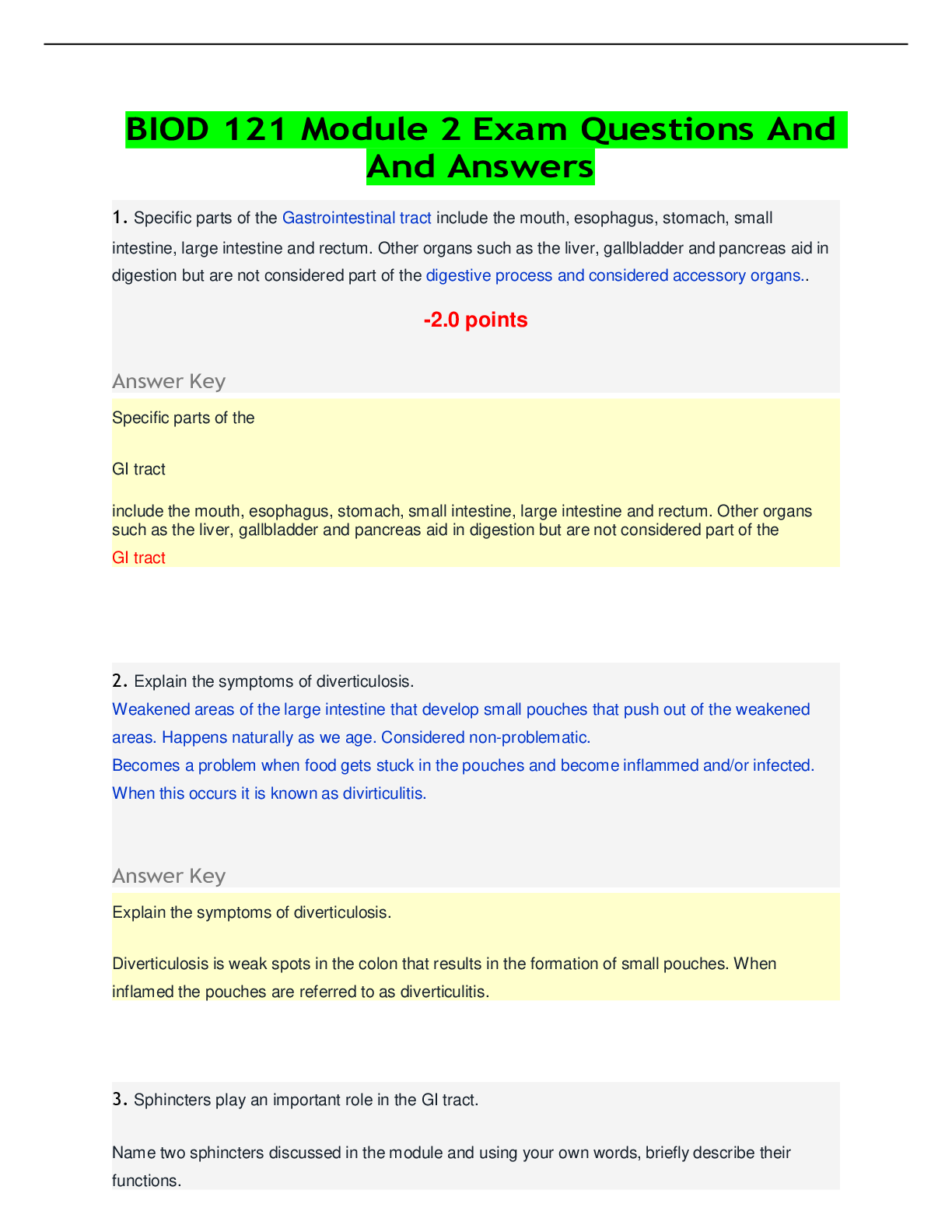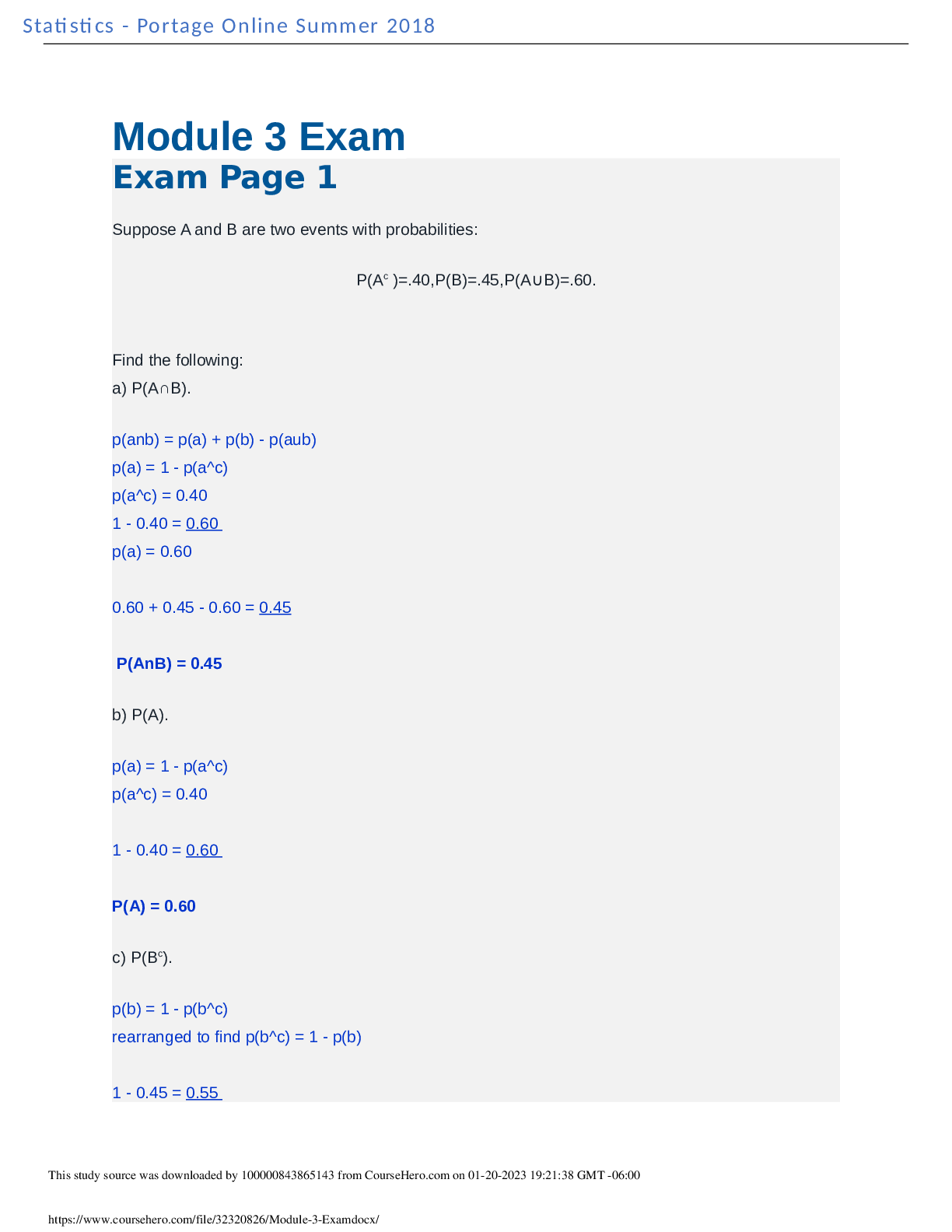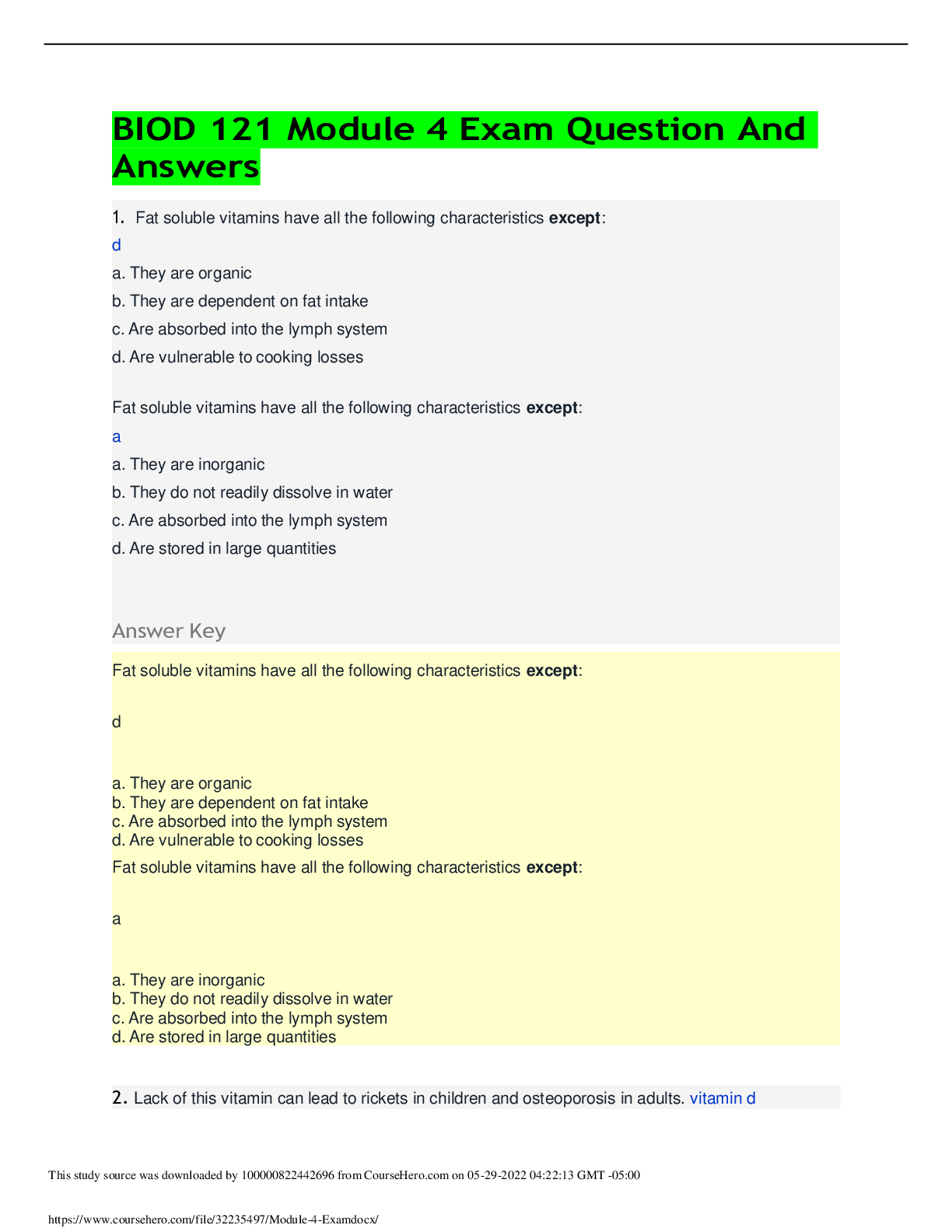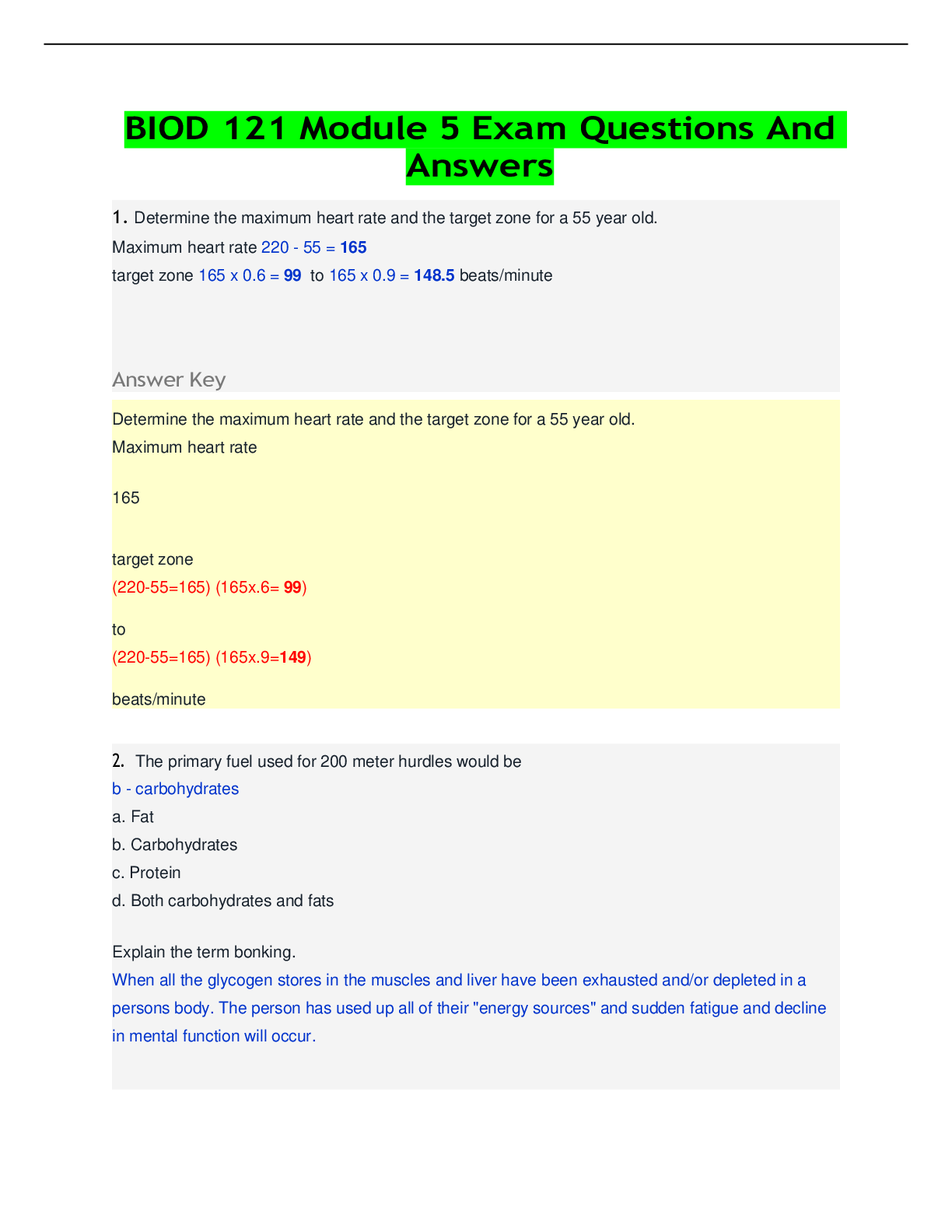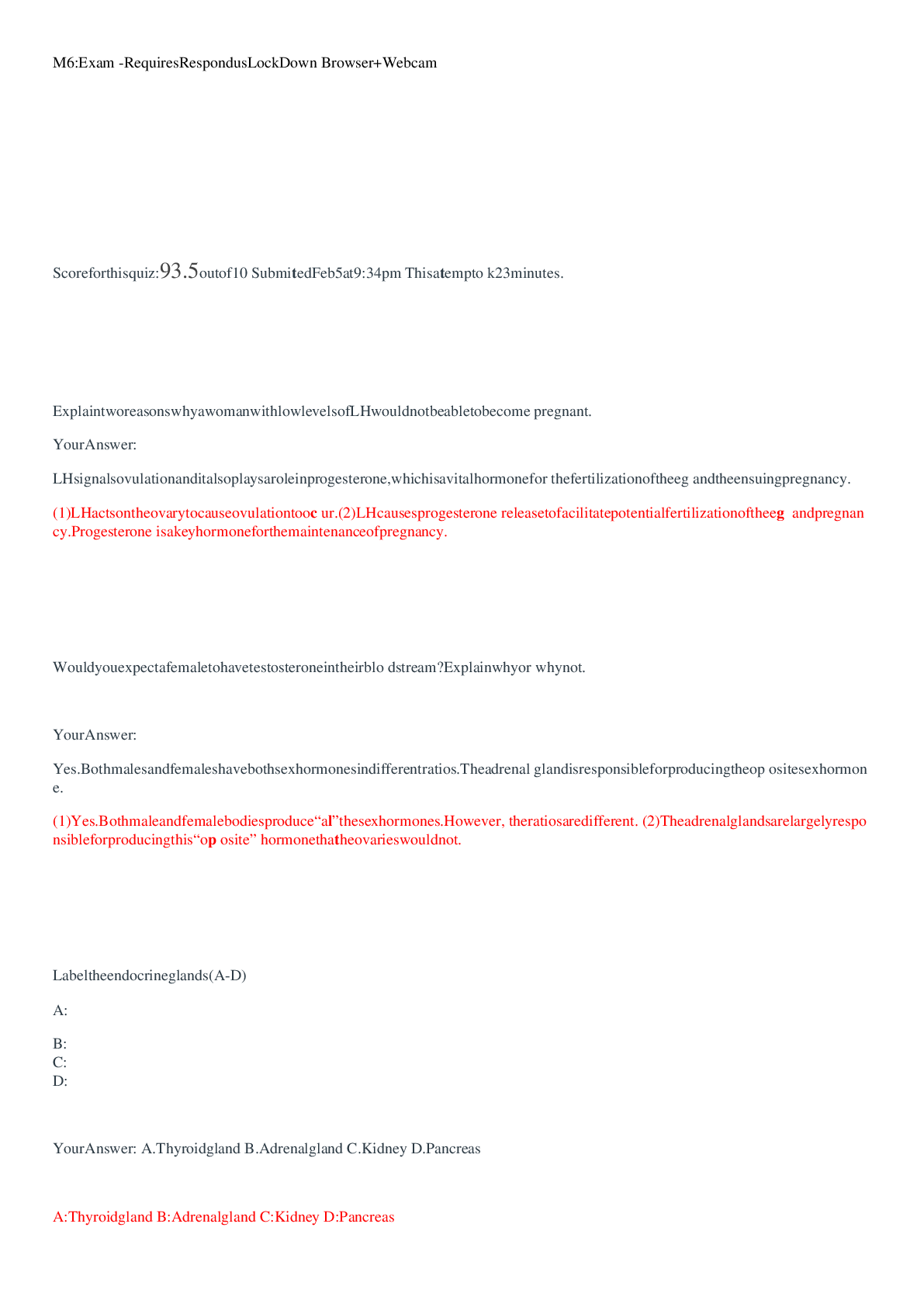NUR 227MN Oxygenation Notes.odt/COMPLETE SOLUTION
Document Content and Description Below
NUR 227 MN Oxygenation Notes.odt Extrauterine Transition of the Respiratory System Step 1: In Utero Step 2: During Labor & Delivery Step 3: At Birth o Crying at birth continues to promote pos... itive pressure, air in the lungs, and therefore alveoli expansion. o Gasping reflex stimulated from noise, light, cooler temperature, increased CO2, decreased O2, handling. Newborn Respiratory Assessment o Count Respiratory Rate o Breath Sounds o Oxygen Saturation – o Pattern o Chest Expansion – Expected: Symmetrical – Deviations: Retractions o Mucous Membranes o Periodic Breathing o Signs of Respiratory Distress Transient Tachypnea of the Newborn o Mild respiratory distress caused by a delay in lung fluid clearance that resolves in 24-72 hours. o Risk factors: – Mom heavily sedated during labor and delivery – Born via cesarean section. o Symptoms: – Tachypnea – Grunting – Mild intercostal retractions – Decreased breath sounds due to reduced air entry – Labored respirations – Nasal flaring – Mild cyanosis o Diagnosis: – Chest x-ray – ABG (arterial blood gas)- degree of gas exchange and acid-base balance. o Nursing Management: Supportive care based on symptoms. – Adequate oxygenation (O2 via NC or hood for good O2 sat) – May need IV fluids or gavage feedings; PO feeds ONLY if respiratory rate WNL – Neutral thermoenvironment – Minimal stimulation to minimize O2 demand Respiratory Distress Syndrome Resulting from lung immaturity and lack of alveolar surfactant (reduces surface tension and prevents collapse of alveoli). Self-limiting, symptoms decline after 72 hrs. o Risk factors: (All impact surfactant production!) – Preterm birth – Perinatal asphyxia – Neonatal sepsis – Born via cesarean section – Male gender – Maternal diabetes o Symptoms are shown at birth or within a few hours: – Grunting – Nasal flaring – Retractions – Seesaw respirations – Cyanosis – Tachycardia – Crackles – Tachypnea o Diagnosis: o Presenting symptoms o Chest x-ray o Rule out any underlying causes such as infection, sepsis o Nursing Management: Supportive based on symptoms o O2 with mechanical vent, CPAP, NC, PEEP, surfactant therapy o Maintain body temperature o Maintain fluid balance o Provide nutrition o Maintain circulation for tissue perfusion o Monitor O2 saturation o Suction via bulb syringe or deep suction o Cluster care Antenatal Glucocorticoid Therapy MEDICATION / DOSE / ROUTE CLASS / ACTION SIDE EFFECTS NURSING IMPLICATIONS Betamethasone (Celestone) 12 mg IM for two doses 24 hours apart (Oxygenatio n) Corticosteroid: *Stimulates fetal lung maturity by promoting release of enzymes that induce production or release of lung surfactant *To prevent or reduce respiratory *May worsen maternal conditions such as DM or HTN *Give deep IM in ventral gluteal or vastus lateralis muscle *Assess blood glucose *Administer two doses intramuscularly 24 hr apart. distress for fetuses b/n 24-34 weeks *Monitor for maternal infection or pulmonary edema. *Educate parents about potential benefits of drug to preterm infant. Assess maternal lung sounds and monitor for signs of infection. [Show More]
Last updated: 2 years ago
Preview 1 out of 4 pages
.png)
Buy this document to get the full access instantly
Instant Download Access after purchase
Buy NowInstant download
We Accept:

Reviews( 0 )
$14.50
Can't find what you want? Try our AI powered Search
Document information
Connected school, study & course
About the document
Uploaded On
Jul 13, 2021
Number of pages
4
Written in
Additional information
This document has been written for:
Uploaded
Jul 13, 2021
Downloads
0
Views
35


